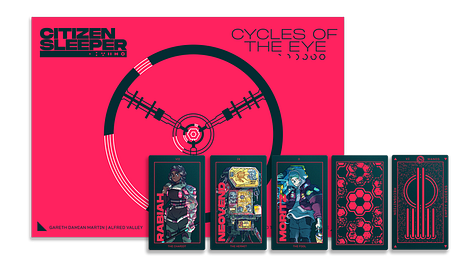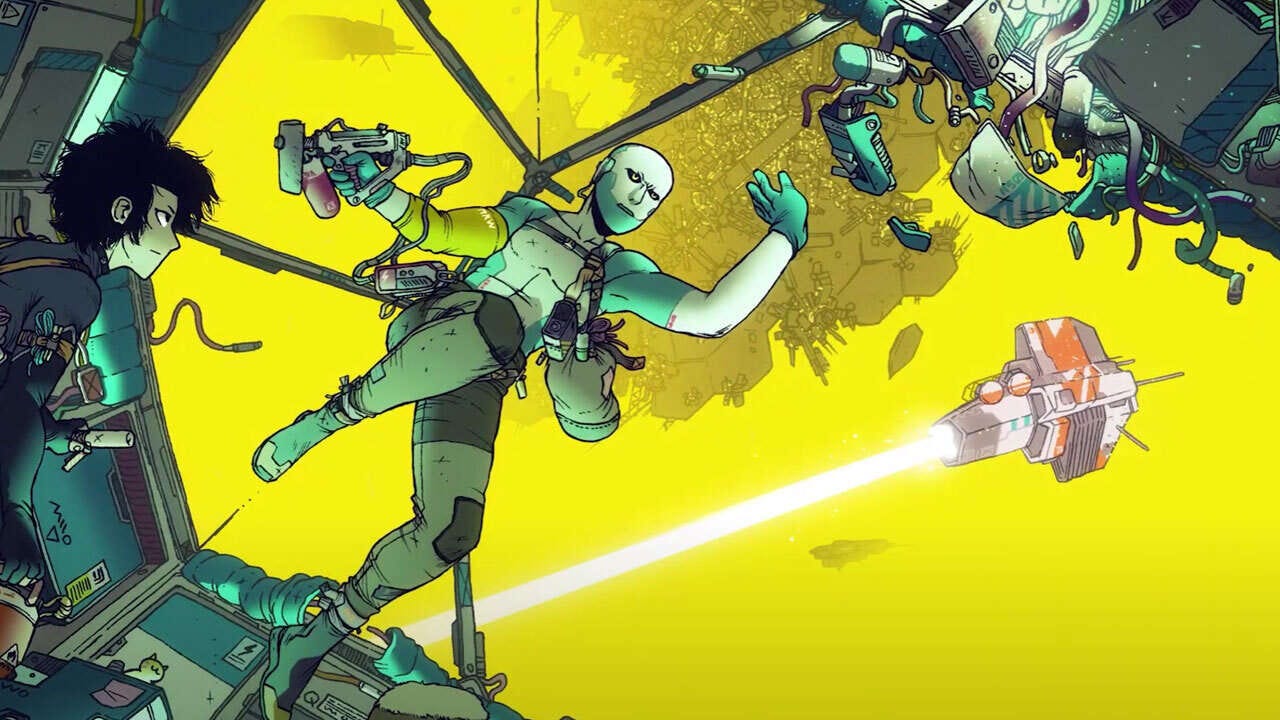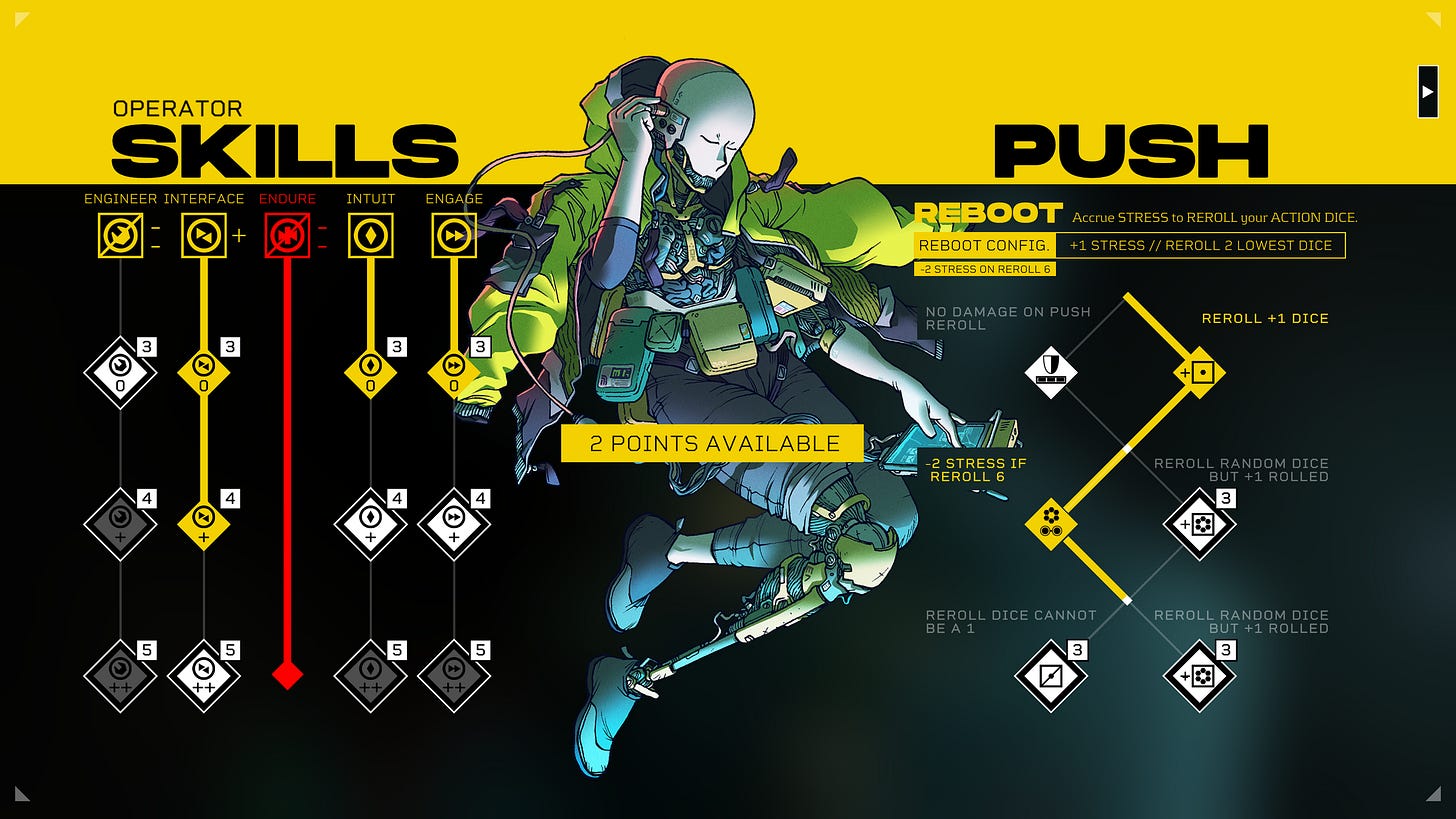Citizen Sleeper 2: Starward Vector Review - The Indie RPG That’s Set the Bar for 2025
Discover the world of Citizen Sleeper 2: Starward Vector in this in-depth review to the highly anticipated sequel of Citizen Sleeper. Find out why it is the must-play indie game of 2025!
Citizen Sleeper 2: Starward Vector
Studio: Jump Over The Age
Publisher: Fellow Traveller
Platforms: Steam
Completion Time: Approximately 16 Hours
Price: $24.99 on sale for $22.49 until February 14th 2025
Genre: RPG, Dice, Cyberpunk, Story Rich, Sci-fi
Hello everyone, and welcome to the Good Game Lobby review of Citizen Sleeper 2: Starward Vector. A Sleeper awakens with a new lease on life. Let’s boot up and hack our way through the Belt.
Jump Over The Age
Gareth Damian Martin, the game’s creator—better known as Jump Over The Age, a one-person development studio—is back with the highly anticipated sequel to the Citizen Sleeper series, a dice-based RPG where humans and androids coexist. In a recent interview, Gareth shared that the game is designed so you don’t need to play the first game to enjoy the second. But for those who did, you’ll recognize some familiar faces.
Choices, Consequences, and the Power of Storytelling
Okay, let’s get into the main premise of CS2. You are a Sleeper—an android, for context—who has escaped from the clutches of an evil thug named Laine. While trying to reboot and remove your dependency on a synthetic drug, Laine catches you, causing your reboot to fail. Now, with your latex-clad body suffering from glitches, you escape. You have a price on your head and, unfortunately, have lost all memory of your past due to the system reboot. Your friend Serafin helped you escape from Laine, and together you need to get a ship, build up your crew, and take on contracts as you navigate across the Starward Belt. The only problem is you can't remember anything before the reboot. How can you trust anyone when you have no recollection of what happened—or what’s to come?
At times, playing the game feels like reading a book with large sections of dialogue, immersing you deeper in the interconnected weaving of data, unknown worlds, and a matrix of connected androids, ships, and space communities all trying to survive in the Belt. I honestly wish I could just read the whole game as a book. The writing is superb, transporting you in and out of the Belt and the complex relationships you build with the people you meet—each one in pain in some shape or form. Losing life, loved ones, a way to survive, or just trying to escape the clutches of a bureaucratic space syndicate.
So, I’m not shocked to learn that Gareth has a PhD in experimental literature. It speaks volumes about the interconnected world they built and how impressive it is to get lost in it with each session. I have seen other reviews though where they took different approaches with different sleepers and didnt enjoy the writing as much so take that with a grain of salt because I only played the operator and thoroughly enjoyed the writing.
One of my favorite contracts in the game involves fixing a water leak after an incident where fragments of ice litter a station frozen in space. Helping to repair it expands your crew and gives insight into how people survive in the vastness of space without a planet to sustain them—and how crucial water is for everyone, a parallel to our current situation on Earth.
Shaping Your Destiny: Mechanics That Matter
Let’s hack into the gameplay.
As a Sleeper, you can choose between three different classes. I selected the Operator, a more physically fragile Sleeper with a deeper hacking system. Then there’s the Extractor, with high physical endurance but lacking intuition, and the Machinist, a skilled engineer who struggles with social engagement. They all have great benefits but come with flaws. The five core skills are Engineer, Interface, Endure, Intuit, and Engage, with each class lacking proficiency in at least one. These skills determine how risky it will be to complete contracts—essentially your missions to progress the story and level up your Sleeper’s abilities.
This RPG uses a dice-based system and borrows heavily on a tabletop style of gaming. Each new cycle (think of a cycle as a day), you roll dice ranging from 1–6. These rolls indicate your chance of success. For example, rolling a 1 gives you a 25% chance of a positive outcome, 50% neutral, and 25% negative. Negative outcomes induce stress, which you need to monitor. Increased stress causes glitches and can even break your dice, adding more stress—a vicious cycle. That skill that each sleeper lacks also comes into place so for instance I lacked endure so those proved dangerous when using a dice on them and it's only when I use a 6 roll of the dice that I would attempt it otherwise you induce stress. You’ll also manage your crew’s supplies to avoid starvation, maintain ship fuel, gather components for upgrades, and complete contracts for Cryo, the in-game currency.
This cycle-to-cycle gameplay grows more complex as you add crew members, who help with major contracts while traveling to new areas in the Belt.
I recommend reading every dialogue tutorial and reviewing them in the settings. I missed one and was puzzled about stress management early in the game. Once I figured it out, though, it became smooth sailing—keeping the crew fed and stress-free.
Unlike the first game, where you’re stationed in one area, CS2 gives you a ship to maintain and explore the Helion System, expanding both the world and lore. Over time you will build up the ship components unlocking more fuel to travel further into the belt.
Even when reading large portions of the dialogue, you are presented with a die to roll for certain actions. This random roll can lead to decisions that impact a story beat and change everything. It keeps you on the edge of your seat, wondering how the outcome will unfold, and fits into real-world scenarios where you never know what will happen next and sometimes just have to take a chance.
Striking Aesthetic in a Dystopian Future
Guillaume Singelin, the character designer, returns for Citizen Sleeper 2. The narrative easily focuses on character actions and their impact on the story because the designs speak for themselves. Guillaume captures each character’s attitude through their posture, weapons, and even their injuries, which add depth to the game’s atmosphere.
Over a year ago, when the game was announced, we were gifted a reveal trailer—an animated video introducing the antagonist Laine and protagonists Serafin and Sleeper. My only complaint is that I wish the game had more of this type of animation. But I understand how time-consuming that would be. If it meant delaying the game for years, maybe it’s a trade-off I can accept. I recommend watching the full trailer because it does a wonderful job setting up the game's main premise. Check it out here:
Atmospheric Soundscapes That Hit Deep
Audio cues for stress are so well done you can almost feel it physically. It pained me just to hear them, so I avoided risky dice rolls unless absolutely necessary. Selecting different areas, buying supplies, or managing ship components all come with satisfying clicks and digital sounds. Since you’re mostly clicking around when not immersed in the narrative, the sound design fits perfectly, enhancing both story beats and the start of new cycles.
The soundtrack is wonderful. I’ve been listening to the first game’s soundtrack for the last two years, so I was thrilled to hear that composer Amos Roddy returned. A recent single released ahead of the game’s launch was just a taste of what was to come. The ambient, spacey vibe complements the sci-fi atmosphere, shifting tones during key story moments—sometimes serious, sometimes uplifting—setting the mood beautifully.
The best way I can describe Amos’s style is that he’s like the Trent Reznor and Atticus Ross of indie gaming.
Here’s one of my favorite songs from the game:
Amos Roddy - Citizen Sleeper 2: Starward Vector (Original Soundtrack)
Why Citizen Sleeper 2 Sets the Bar for 2025
One of the highlights of Citizen Sleeper 2 is the depth of its world and the effort put into marketing it. For the last two years, Gareth has run a Substack featuring transcripts of a pirate radio broadcast called Helion Dispatches, transmitted from a refugee ship out of The Eye—the setting of the first game. As I mentioned earlier, you don’t need to play the first game to understand the second, but returning players will recognize familiar characters. I haven’t played the original Citizen Sleeper yet, so I’m excited to see how everything connects, especially after meeting the pirate radio hosts Cyrene and Kimbal during contracts in the Starward Belt.
Quick note: The game has an autosave feature, so if you’re hoping to save-scum your way around the Helion System, think again. I love this—it adds tension to every big decision.
Citizen Sleeper 2: Starward Vector pulls you into the Sleeper’s world and deeper still into their thoughts and mind. Gareth Damian Martin has achieved a tremendous feat, connecting the game with the player like a Sleeper hacking into a mainframe. The decision-based story doesn’t hold back, forcing you to make tough choices that can determine the fate of those already struggling to survive in the Belt. Choose wisely—your decisions might come back to haunt you.
With deep lore, a richly designed sci-fi world, and an atmospheric soundtrack, the team behind this game has created something truly special. The influence of Cowboy Bebop is clear—a ragtag crew, a ship always in need of repairs, and the constant struggle to make enough cryo to survive in space.



Citizen Sleeper 2: Starward Vector is a must-play and, so far, my favorite game of 2025. As much as I love a long 50-100 hour RPG in my latter years it has become a struggle thats why I love that this particular RPG took me on 16 hours to complete the main game, with some side tasks along the way. It’s priced at $24.99, a fantastic price point for what you are offered. It’s out now on PC, Switch, PS5, Xbox Series X|S, and Game Pass. With the first game, we were blessed with a physical tabletop version and a Lost in Cult Design Works book that also featured animatics for the Citizen Sleeper 2 reveal trailer, as well as DLC for the first game. I hope we get the same and then some because I’m eager to dive back into this world and learn more about it.
It even inspired me to start exploring tabletop gaming, so if you have any recommendations, drop them in the comments!
Thanks to Fellow Traveller for the review key.













OK! So I couldn't get into the first game. Should I give the 2nd a go? Different or more of the same? I also have a Steam Deck now so may be a bit easier -- didn't run that well streaming to my TV via Xbox GamePass
Citizen Sleeper was one of my favorites of 2024. I’m really looking forward to playing this one!